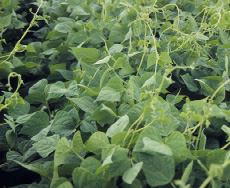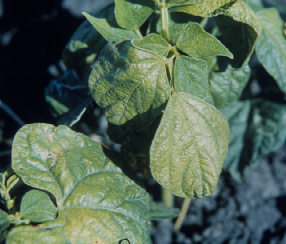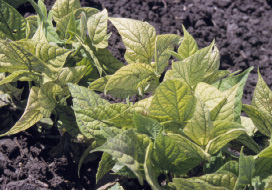Nitrogen (N) nutrition is important to dry bean production not only to sustain high yields, but also because of quality concerns. Excessive N can delay maturity and encourage excessive leaf canopy growth, which may lead to increased disease incidence and severity in some years. Maturity delays and increased disease may result in a reduced market price for growers due to reduced quality.
Dry bean growers usually do not go in and out of the business as do growers of other commodities in the state. For that reason, most growers know what N fertilization strategy works best for them in their area and their soils.
Growers have used four main N fertilization strategies effectively:
- No inoculation or supplemental N
- Inoculation using a nitrogen-fixing bacteria at seeding
- Inoculation and supplemental N
- Supplemental N only
Some soils with coarse to medium textures and higher organic matter levels (in excess of 3 percent) that have been in a dry bean rotation for many years do not require additional inoculation or supplemental N fertilization. These soils encourage natural inoculation by N-fixing bacteria from previous years’ bean production.
The efficiency of the bacteria in this environment is so great that they are able to provide all the N requirements of the dry bean without additional assistance. In relation to the entire state dry bean acreage, these soils are in a minority, but for individual growers, they are important.
Inoculation is inexpensive, compared with supplemental N fertilizer. The inoculation for dry bean is Rhizobium leguminosarum biovar phaseoli. However, some soil and environmental conditions limit the effectiveness of the inoculants.
Hot weather and wet soils can result in nodule abortion. Therefore, in areas that tend to be hot in June, such as west of Jamestown and along the Missouri River, inoculation may not result in consistent yields, compared with supplemental N.
Likewise, if fields have significant areas of fine-textured soils, inoculation may not result in adequate yields in wet years. Therefore, inoculation is more effective in medium- to coarser-textured soils that are well-drained and in the northern half of the state. Seed for first-year dry bean fields always should be inoculated.
In the last 20 years, more than 30 site-years of trials have been conducted by various researchers in North Dakota and northwestern Minnesota. Using an N cost of 30 cents/pound of N and a dry bean price of 20 cents/pound (lb), the return to N in inoculated and noninoculated trials was determined (Figure 1).
Figure 1. The economic return to supplemental N from more than 30 inoculated and noninoculated trials in North Dakota and northwestern Minnesota. Cost of N at 30 cents/lb of N and dry bean price of 20 cents/lb.
From these data, inoculated trials did not benefit from N rates greater than 40 lb N/acre, including residual soil nitrate from soil testing. Noninoculated trials peaked at about 100 lb N/acre, but N fertilization at rates in excess of 70 lb N/acre provided little additional economic advantage.
Risks of later maturity and increased incidence and severity of white mold disease would favor the 70 lb N/acre rate instead of the 100 lb N/acre rate. The most economic rate was not related to yield potential or yield goal. Therefore, no scale of yield goal is made with N rate considerations in dryland production of dry bean.
In years when environmental conditions favor higher yields, the conditions also stimulate greater mineralization of N from organic matter and crop residues, resulting in higher N availability to support higher yields.



